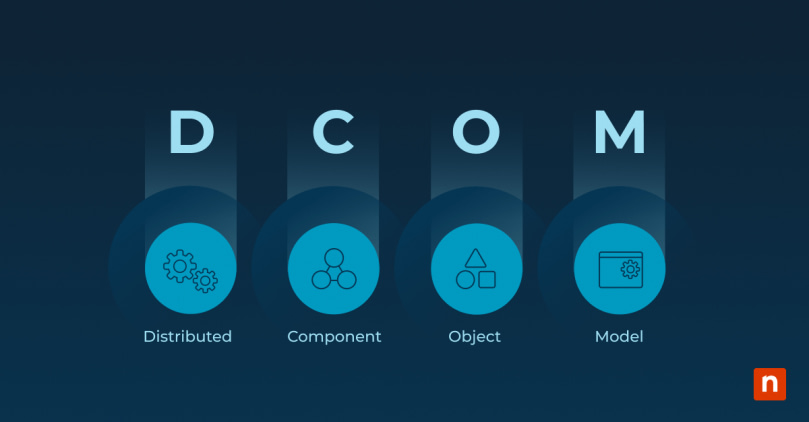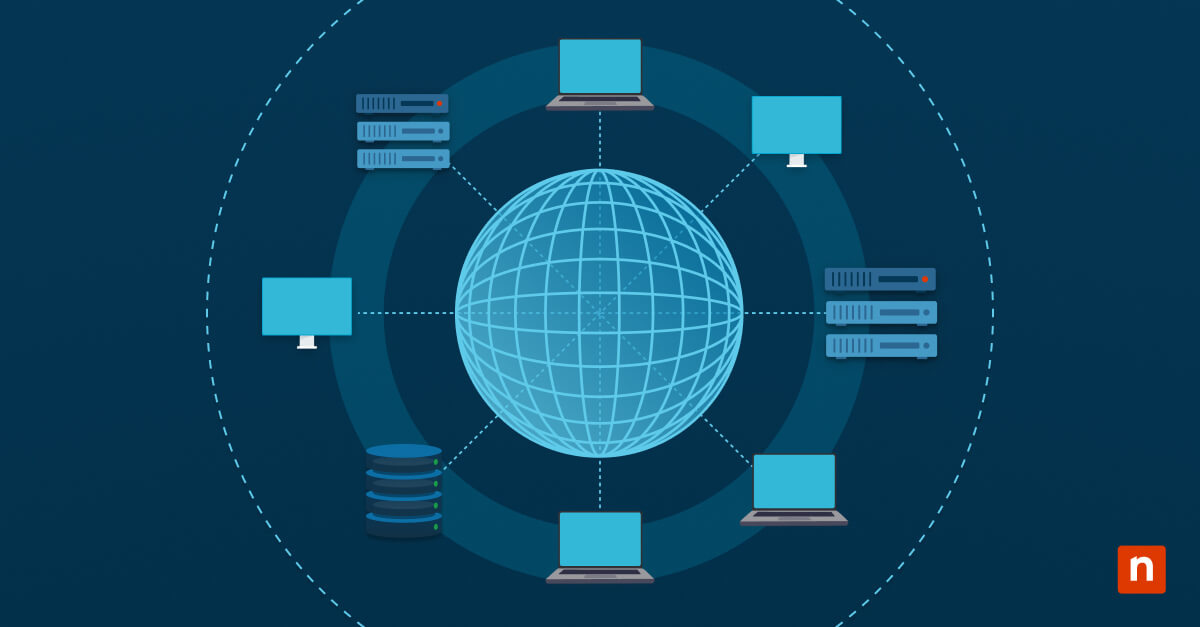Introduced by Microsoft in the mid-1990s, the Distributed Component Object Model (DCOM) revolutionized the way applications communicated over networks.
What is the Distributed Component Object Model?
The Distributed Component Object Model is a Microsoft technology that plays a role in building modern distributed systems. DCOM is designed to enable remote method invocations, facilitating communication between different software components on separate machines. This model is used to develop enterprise-level applications by supporting dynamic and efficient interactions in a distributed architecture. By leveraging DCOM, you can enhance the interoperability and performance of your applications across diverse network environments.
Core functions of the DCOM model
DCOM’s core functions are designed to enhance interoperability and reduce latency in distributed systems. By leveraging DCOM, enterprises can achieve higher levels of efficiency and reliability in complex application environments, ensuring smooth and secure data exchanges across different platforms.
Enabling remote procedure calls
One of the primary functions of the Distributed Component Object Model is enabling remote procedure calls (RPCs). RPCs allow a program to execute procedures on a different address space, so you can use them to invoke methods on remote objects as if they were local. Make sure that your RPC settings are correctly configured to manage network latency and data serialization. Additionally, implement security measures such as authentication and encryption to protect RPC communications from unauthorized access.
Facilitating communication between components
DCOM facilitates communication between components in a distributed system by providing a framework for components to interact seamlessly, regardless of their location. The model supports communication across different platforms and languages. Use standard protocols and data formats to ensure interoperability between diverse components. Implement error handling and logging mechanisms to monitor and troubleshoot communication issues effectively and optimize your network settings to improve data transfer rates and reduce communication overhead.
Supporting object-oriented programming
The DCOM model supports object-oriented programming (OOP), which supports the creation of modular, reusable, and maintainable code. With DCOM, you can develop distributed objects that encapsulate data and behavior. This promotes better software design and implementation. Use design patterns such as factory, singleton, and observer to enhance the modularity and reusability of your distributed objects and implement version control for your distributed components to manage updates and compatibility issues.
Enhancing scalability and flexibility
Scalability and flexibility are critical aspects of distributed systems, and the DCOM model excels in these areas. DCOM’s architecture allows for the dynamic addition and removal of components. By distributing components across various servers and networks, you can scale your applications to handle increased loads and demands. Plan your infrastructure to support horizontal and vertical scaling, use load balancers to distribute workload evenly across servers, and monitor system performance regularly, and adjust resources as needed to maintain optimal performance.
Integrating with various network protocols
The Distributed Component Object Model integrates with various network protocols, which is essential for building distributed applications. Whether you’re using TCP/IP, HTTP, or other protocols, DCOM can communicate effectively. Configure your network protocols to support secure and efficient data transmission and implement redundancy and failover mechanisms to ensure continuous operation during network outages. Additionally, test the integration of DCOM with different protocols to ensure compatibility and performance.
Importance of DCOM in distributed systems
DCOM provides a robust framework for building applications that operate across different networks and locations. Its ability to enable remote procedure calls, facilitate communication between components, and support object-oriented programming makes it indispensable for modern software development.
By enhancing scalability and flexibility, DCOM allows your systems to grow and adapt to changing demands. Use DCOM to simplify the development process by providing a standard framework for component interaction. Implement security features to protect your data from unauthorized access and tampering.
DCOM best practices for implementation
Implementing DCOM effectively requires adherence to best practices to ensure security, performance, and compatibility. Here are some best practices to ensure a smoother implementation:
- Ensure proper configuration and security: Configure all components correctly and apply appropriate security settings. Set access permissions, enable encryption, and use secure communication channels.
- Regularly update and maintain DCOM components: Apply patches, update software versions, and monitor performance regularly. This prevents vulnerabilities and keeps components functioning optimally.
- Train developers on DCOM usage and troubleshooting: Provide regular training sessions and resources. Ensure your developers understand DCOM’s intricacies and can implement and maintain DCOM-based applications effectively.
- Implement a robust logging and monitoring system: Implement comprehensive logging to capture detailed information about interactions and performance. Use monitoring tools to track real-time metrics and alert your team to anomalies.
- Ensure compatibility with existing systems: Conduct thorough compatibility testing. Address compatibility issues early and maintain documentation for future reference and troubleshooting.
Improve system performance for effective Day 2 operations
Continuous optimization of DCOM environments helps enhance system performance and ensure operational efficiency. By fine-tuning configurations and proactively managing resources, enterprises can significantly reduce latency and improve overall system reliability.
Optimize network communication
Start optimizing network communication by configuring network protocols and settings to reduce latency and enhance data throughput. Use Quality of Service (QoS) settings to prioritize DCOM traffic, ensuring that important communications are not delayed by less significant network activities. Segregate DCOM traffic from other types of network traffic by implementing virtual local area networks (VLANs) to reduce congestion and improve performance.
Once your network is optimized, regularly review network performance metrics and adjust configurations as needed. Consider using advanced networking technologies, such as software-defined networking (SDN), to dynamically manage and optimize network resources.
Implement load balancing
Map out the load distribution and identify potential points of failure. Using both hardware and software load balancers distributes tasks dynamically based on real-time performance metrics. Configure load balancers to handle different types of traffic and workloads, ensuring that resources are allocated efficiently. Incorporate redundancy into your load-balancing setup to ensure high availability and reliability, and regularly monitor load distribution and make necessary adjustments to improve efficiency.
Manage system resources effectively
Monitor and control system resources such as memory, CPU and disk I/O by DCOM components. Implement resource management policies that allocate resources based on priority and usage patterns and use resource monitoring tools to track usage and identify potential bottlenecks or inefficiencies. Additionally, optimize resource allocation by fine-tuning system settings and configurations to match the workload demands.
You can automate resource management by implementing solutions that dynamically adjust resource allocation in response to changing conditions. Regularly review resource usage reports and make adjustments to ensure that your system operates smoothly and efficiently.
Plan for scalability
Design your applications with scalability in mind, using modular and scalable architecture patterns. You can plan for the dynamic addition and removal of components to handle increased loads by using scalable technologies such as containerization and microservices to enhance flexibility and scalability. Implement automated scaling solutions that can adjust resources dynamically in response to demand fluctuations. Use a controlled environment to test your scalability plans to ensure they are effective and can handle real-world scenarios.
Conduct regular performance testing
Performance testing tools can simulate real-world conditions and allow you to measure system performance. Analyze your test results to pinpoint bottlenecks and areas for improvement. Use testing insights to implement changes and enhance the performance and reliability of your DCOM environment. Schedule periodic performance tests to ensure ongoing optimization and readiness for increased demands and document the findings and improvements from each test cycle to build a knowledge base for continuous improvement.
Harnessing the power of DCOM for distributed applications
Understanding what the distributed component object model is takes effort, but by knowing its core functions and implementing best practices, you can leverage DCOM to create robust, scalable and efficient systems. Focus on proper configuration, regular maintenance, developer training and performance optimization to ensure the success of your DCOM-based applications. Staying updated with the latest developments in DCOM technology will help maintain a competitive edge in your distributed systems.








